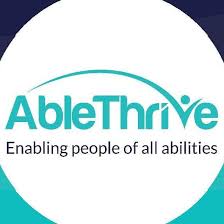 Beth as a toddler :-) Beth as a toddler :-) (This blog tells my family's story. To see more, click "blog" at the top of this webpage.) Beth’s first swimming summer ended with her first Sectional meet in August of 2002. When we drove through Indianapolis to Indiana University, we noticed the unusual billboard again, the same one we saw in Seattle. Quadriplegia at Harvard: A+. Sectionals was another packed to the hilt USA Swimming meet. “A swimmer who uses a wheelchair," Beth said, "is still an unusual sight at most swim meets." Able-bodied swimmers stood on the raised blocks to begin races for all the strokes except one: the back, which always started in the water. Most used their feet and legs to surge off the wall. Beth tried to gain a bit of momentum with her hands pushing off the wall. With rare exceptions, backstroke swimmers alternated their arms simply because it was faster. For Beth, the double-arm backstroke resulted in a better time, despite her head dipping under. She improved slightly on her swim times, but aimed higher. When her junior year of high school started, Beth scheduled a GTAC practice late afternoon every Friday. With the Toledo pool filled to capacity, she learned how to share a lane while a coach supervised her backstroke laps. At the end of every practice, she tried to get out of the pool by herself. Beth pressed her back into a corner of the pool and put her hands up on the ledge behind her, to try to lift herself up and out of the water. She rose just a few inches before falling forward, but she kept trying, regardless. Every practice. In addition to swimming on Fridays in Toledo, Beth asked to go to our Tiffin YMCA with me once or twice a week. I helped her into the water. Her practices without a coach focused on forward motion, the first step in her plans to master all of the swim strokes. I watched her closely from the deck bleachers, since she spent more time under water than above it. She somehow could get herself almost to the halfway point of the 25 yard length with a few short bursts to the surface for rapid breaths. Then she had to give her arms a break and roll onto her back to breathe more deeply. Even if by some miracle she could progress continuously on her stomach for the whole length of the pool, a bigger hurdle loomed: learning the mechanics of the butterfly, breaststroke, and freestyle, with legal modifications for legs that dragged behind and hands that could not cup the water. I worried. And worried. Would failing to achieve this goal tip Beth over the edge to depression? And without her buoyant optimism, how would I be able to move forward? Guilt and anxiety plagued my days and nights. What if overused antibiotics lost their effectiveness? That was how the quad in Green Springs had died of pneumonia in the hospital room next to Beth’s. Or would a blood clot travel to her heart or brain? I was sadly stuck in worst-case scenarios. Thankfully, Beth was not. “My next goal is to make the U.S. National Team that will attend the 2004 Paralympics in Athens, Greece.”
2 Comments
Bonnie Oberlander
3/9/2017 06:48:23 pm
I love to read about Beth's progress in swimming. I'm going to forward the blog information to the swimmers in my family. Her courage and determination inspire everyone who reads about her.
Reply
3/10/2017 01:39:15 pm
Thank you, Bonnie, for sharing my blog. I really appreciate it! Yes, Beth has other videos. Sorry for my delay in responding. I was locating her videos. They are on AbleThrive, YouTube, and SPINALpedia. Unfortunately, not all are linked with her name on AbleThrive, which is an amazing new site your granddaughter will be interested in. I am planning to group her YouTube videos on her own channel and I'll let you know when I have it completed. In the meantime, SPINALpedia has 9 videos, all under "Elizabeth Kolbe". Your granddaughter could create a free account on SPINALpedia and access the videos there.
Reply
Leave a Reply. |
Cindy KolbeSign up for my Just Keep Swimming Newsletter by typing your email address in the box. Thanks!Categories
All
Archives
November 2022
|

 RSS Feed
RSS Feed











